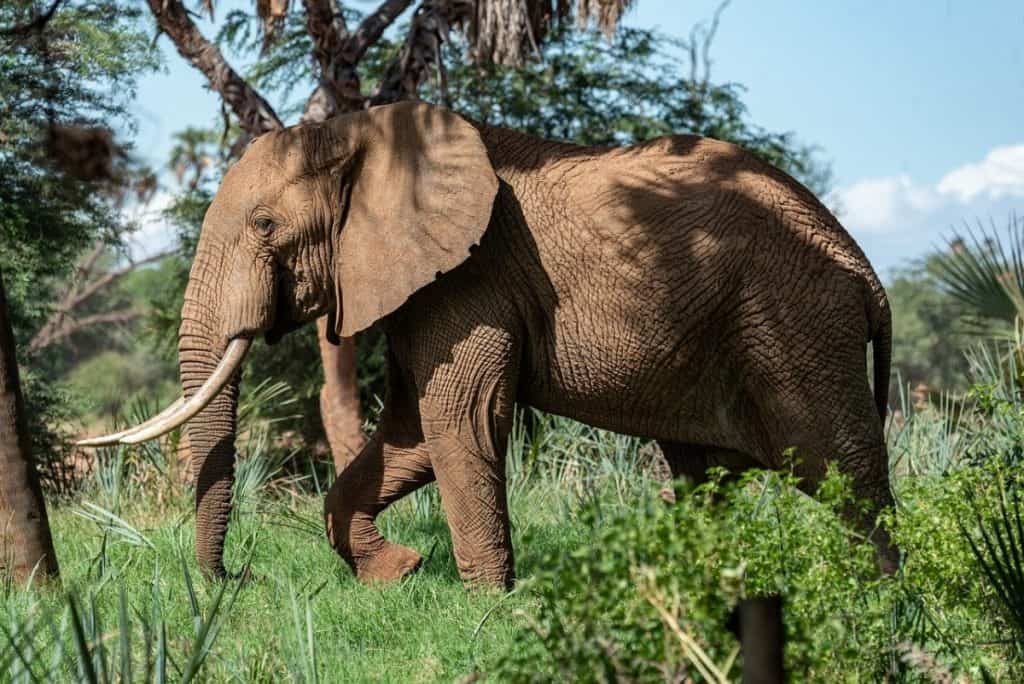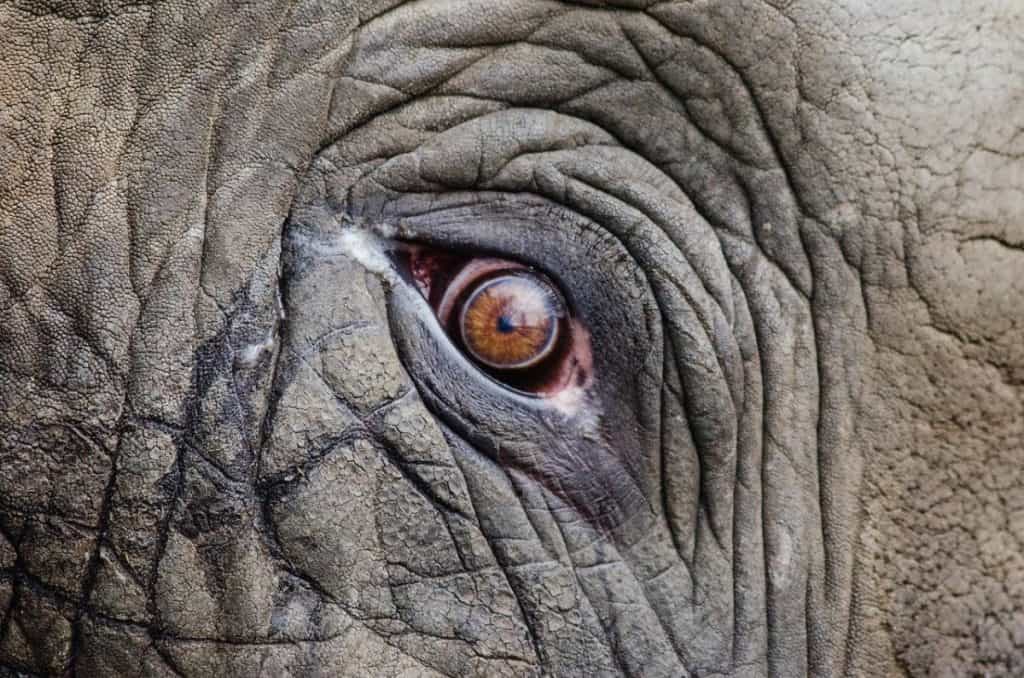With their large ears and long trunks, it would be easy to assume that elephants have great hearing and a good sense of smell. Elephants have fine-tuned their senses to enable them to survive in harsh conditions.
Elephants have excellent hearing and can hear sounds outside the frequency of humans. They also have an incredible sense of smell, up to 5 times better than a bloodhound. They have poor eyesight but can see up to about 10-20 meters in good conditions. Elephants also communicate using their excellent sense of touch.
Elephants are the largest land animals, and their extremities indicate how well their senses work.
Do you know how to tell the difference between an Asian and African elephant? Find out here.

Hearing
Elephant ears are large and mobile. Each can be moved, flicked, and waved independently of the other, with some movements making a loud whip-cracking sound.
African elephants have larger ears than Asian elephants. African elephants live closer to the equator, giving them bigger extremities. This explains why the woolly mammoth near the North Pole had small ears.
The large ears indicate that an elephant has good hearing. Elephants can hear a greater range than humans. While humans can only hear low sounds down to 25hz, an elephant can listen to and produce infrasound down to 5hz.
Elephants communicate using vocalizations, so a good sense of hearing is essential. Elephants use about 30 different calls to communicate, which are used to warn others of danger or coordinate the herd’s movements. The large ears are usually held at right angles to the head and act like a satellite dish.
Due to their excellent hearing, elephants can react to others at distances up to 4 km away, although, in the right conditions, this can increase up to 10 km. Elephants can recognize individuals up to 2.5 km away. Low frequencies travel further in cool weather, and elephants make many of their calls before sunrise and after sunset to help this.
Elephants can hear and respond to a normal conversation at 100 meters. An elephant call can be as loud as 117 decibels, which is like most large rock concerts.
Although an elephant has large ears, the main reason for this is not to help with hearing. Elephants have large ears to dissipate heat away from their bodies. The huge ears cool the blood as it circulates through the vessels on the inner surface.
Elephant ears are unique, with different scratches, tears, and veins, and scientists will use the ears to identify individual elephants.
There are five ways that elephants communicate. Find out what they are here.
Smell
Elephants have a vast nasal cavity where the trunk reaches the skull. They use their trunk to detect different scents, and their sense of smell is about five times that of a dog.
Elephants can detect the scent of a human up to 200 meters away, but strong smells can be detected over longer distances.
Elephants use their trunks to test the urine and dung to determine if a female is in estrus. After the cow has urinated, the bull will dip its trunk into the urine and then taste it by placing it into the mouth and against the vomeronasal ducts. After the air is exhaled onto the ducts to stimulate the senses, the male will know if the female is ready to mate.
Elephants can recognize others by their smell and can often be seen using their trunk to touch another elephant’s genitals, mouth, and ears.
Do you know which animals can take down an elephant? Find out here in this article I wrote.

Sight
Elephants do not have the best eyesight, although the other senses make up for this. Elephants can see clearly for up to 10 meters, but little over 20 meters. Elephants have a nictitating membrane that acts as a third eyelid. This helps to stop dust from injuring the eye, and they also have large eyelids to prevent further damage.
Elephants have their eyes on the sides of their heads, and the placement allows them to see back past their body. When elephants walk, they often swing their heads, enabling them to see almost all around them.
Elephants do not have tear ducts, but they can often be seen with a liquid coming from their eyes. This secretion from the harderian gland helps to lubricate the eyes.
Elephants are colourblind. They can see blues and yellows but cannot distinguish between reds and greens, which is surprising considering they eat vegetation.
Do you know how elephants mate? Find out here
Touch
An elephant’s skin varies from paper-thin around the inside of the ears and around the mouth to one inch thick on the back and parts of the head. Their skin is a sensitive system with bristles and hair distributed evenly.
Elephants use their sense of touch a lot and are very tactile. Elephants use many parts of their body to touch each other, including their trunks, head, ears, body, and tails. Whenever an elephant feels another, it is to communicate.
The trunk is covered with sensory hairs, with the tip of the trunk being the most sensitive. They are flexible enough to pick up small objects or pick individual fruit from a tree. There are no bones in the trunk but are made up of many thousands of muscles.
Elephants wrap their trunks around one another when greeting each other and are also a sign that they want to play.
Trunks are also used to discipline calves with a slap, shove, or being pulled by the adult’s trunk. However, the trunk is also used to reassure their young, like the tail and the foot.
Elephants will often scratch themselves on termite mounds or trees. An elephant’s skin is sensitive and can be home to ticks and parasites. By rubbing themselves against something such as a large tree, they can reach areas out of the way.
Elephants use their trunks in lots of different ways. Find out more in this article I wrote.

